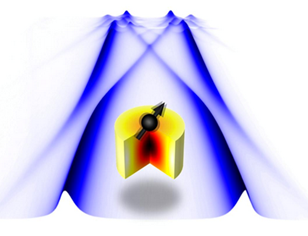
Control of Photon-Magnon Interaction Benefits Quantum Signal Processing
The University of Chicago’s Pritzker School of Molecular Engineering and the U.S. Department of Energy’s (DOE) Argonne National Laboratory achieved a first-of-its-kind scientific control. They demonstrated real-time control of the interactions between microwave photons and magnons that could lead to advances in electronic devices and quantum signal processing.
Microwave photons are elementary particles that form electromagnetic waves used for wireless communications. Magnons are elementary particles that form “spin waves” or wave-like disturbances in an ordered array of microscopic aligned spins that occur in certain magnetic materials.
Microwave photon-magnon interaction is a promising platform for classical and quantum information processing. Yet, until now, this interaction had proved impossible to manipulate in real-time.
The team uses an electrical signal to periodically alter magnon vibrational frequency and induce effective magnon-photon interaction, resulting in a first-ever microwave-magnonic device with on-demand tunability. The device can control the strength of the photon-magnon interaction at any point and even completely turn the interaction on and off. Now, scientists can process and manipulate information in ways that far surpass present-day hybrid magnonic devices.
The DOE Office of Basic Energy Sciences supported this research, which was published in Physical Review Letters.
